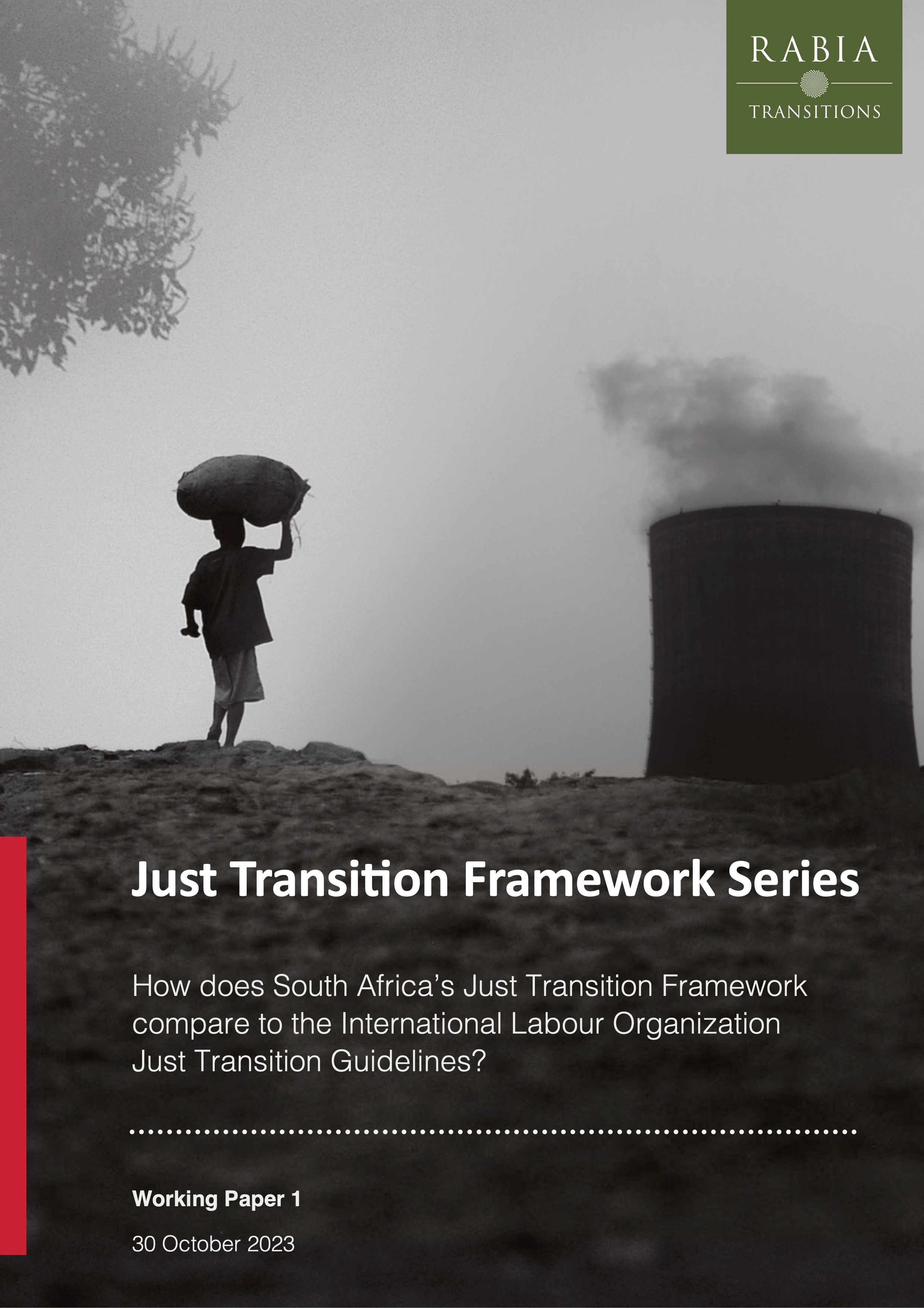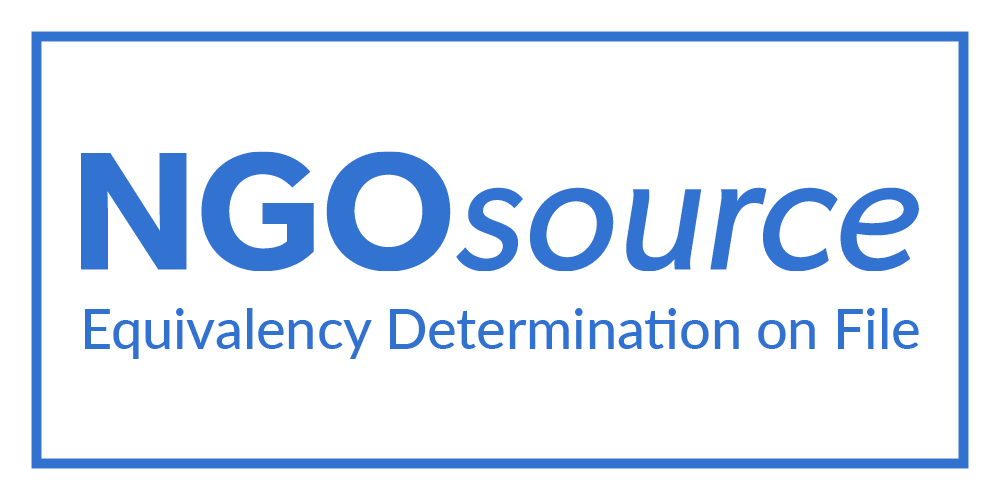Recommended citation: Sheehama, A., Mazarire, T., Beaumont, J., and Naidoo, C.P. “How does South Africa’s Just Transition Framework compare to the International Labour Organization Just Transition Guidelines?” Working Paper 1 of the Just Transition Framework Series. Rabia Transitions Initiative. Johannesburg.
The paper is part of a working paper series focusing on South Africa’s Just Transition Framework (JTF) as a policy instrument and guide for South Africa’s just transition. This first paper compares the JTF against the 2015 International Labour Organization (ILO) Just Transition Guidelines. The ILO guidelines are a useful international benchmark for national frameworks on enabling a just transition process. However, country context and ambition matter, hence benchmarks like the ILO guidelines are helpful guides for refinement, rather than the maximum standards to adhere to.
South Africa strategically anchors its climate response in fostering a just transition, as best represented by the JTF developed by the Presidential Climate Commission (PCC) and adopted in September 2022. The JTF acknowledges the mounting vulnerabilities and risks to lives and livelihoods of the climate response and calls for social partners to align with its principles and formulate their own policy stances. This call should cultivate unity and shared responsibility for a just transition in South Africa.
The JTF and ILO Guidelines are written at different levels, with South Africa’s JTF being closer to national priorities and applications. The comparison was helpful to showcase the strengths and areas of refinement, and the evolving nature of the just transition policies and principles for both documents. The comparative analysis between the JTF and ILO Guidelines is structured around four pivotal areas: the vision and principles, outlined policy areas, and governance arrangements. Key findings reveal instances where:
- JTF's principles align with those of the ILO Guidelines, but the JTF has a greater ambition as it goes beyond the ILO’s Decent Work Agenda.
- JTF's definitions express procedural, restorative and distributive justice as essential elements driving governance, vision and implementation.
- Shortcomings of the ILO and JTF include the focus on energy transitions, with resilience markedly absent –stark gaps recognising food and water security and disaster preparedness are evident.
- ILO Guidelines provide more detailed roadmaps for implementation.
- JTF institutional arrangements are a work in progress, but clarification is required to delineate the contributions of sectoral departments.
In conclusion, potential areas for refining the JTF is suggested around the vision and principles, governance arrangements and policy areas, by considering the following:
Extending the vision and principles:
- The JTF outlines strategic roles for stakeholder engagement but falls short of adequately addressing the financial sector's role and setting the JTF as a national policy statement, guiding departmental engagement through their mandates.
Delving deeper into policy areas, by considering:
- The JTF’s engagement with existing policy frameworks.
- Identifying other value chains/sectors and the potential regional impacts concerning food, water, energy, and employment.
- Proposing social protection measures, for affected communities.
Prioritise governance consideration by:
- Enhancing a "whole-of-government" through the integration of the justice element in the policy and planning processes.
- Drawing lessons from the NDPs (National Development Plan) process to facilitate the integration of the JTF.
- Emphasising the engagement of key sector departments in the PCC’s processes.
Further considerations for enhancing the JTF, include:
- Enhance the JTF alignment through government engagement to facilitate a "one government voice."
- Articulating the support needed by provincial and local government for active participation in the transition.
- Continued dialogue for achieving social consensus.



